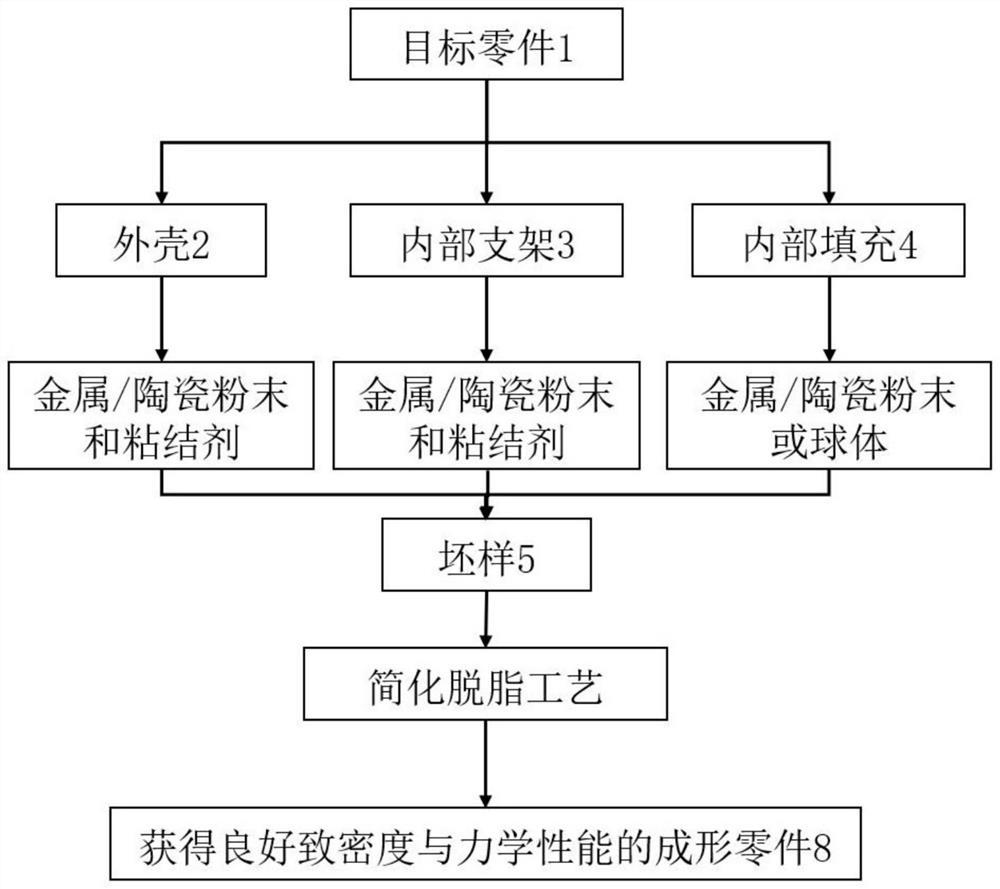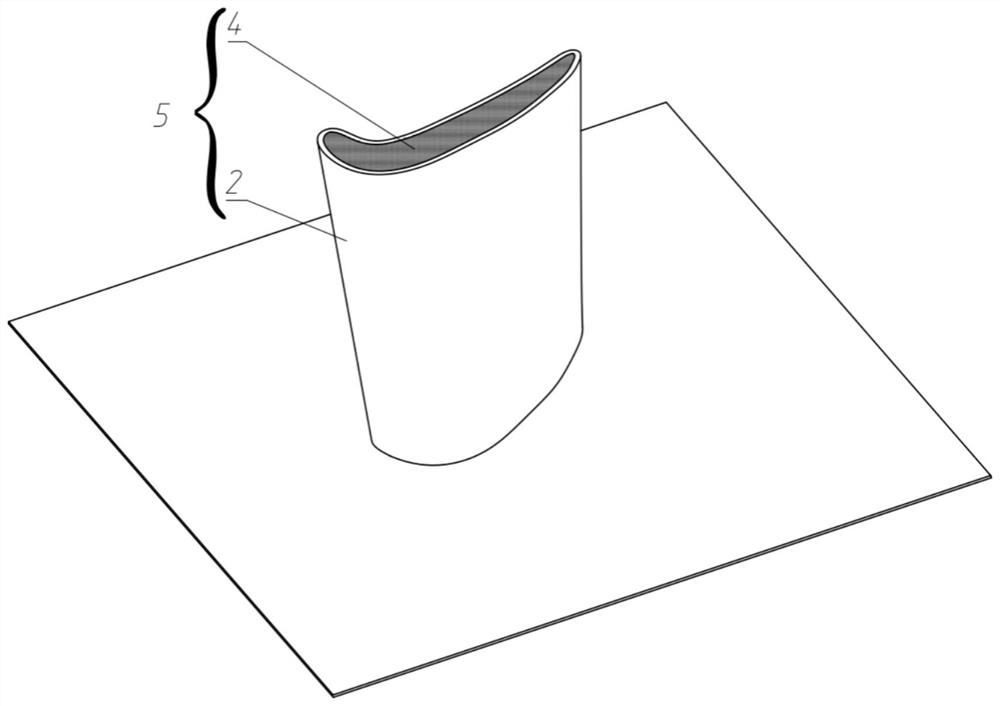3D (Three-dimensional) printing method for metal/ceramic powder sintering partition
A 3D printing, ceramic powder technology, applied in the field of parts preparation, can solve the problems of easy collapse of parts, time-consuming degreasing process, etc., to achieve the effect of ensuring structural strength
- Summary
- Abstract
- Description
- Claims
- Application Information
AI Technical Summary
Problems solved by technology
Method used
Image
Examples
Embodiment 1
[0079] The technical method of this embodiment 1 is based on the deposition technology of metal paste 3D printing; based on the partition method and the three-dimensional model, the model of the target part is divided into three parts: the shell 2, the internal bracket 3, and the filling area 4, and the shell 2 is of equal thickness. The shell and the internal bracket 3 are grid-shaped; when manufacturing each layer of the part blank 5, the metal paste made by mixing metal powder and polymer binder is used to melt the shell 2 and the internal bracket 3 Deposit single-layer printing to ensure that the part blank has a good bearing capacity; then use a powder dropping device or a powder spreading device to print the filling area 4 of the layer blank 5 with metal powder; print layer by layer, and finally obtain a metal powder that is much larger than The printed blank sample of the binder 5; due to the significant reduction of the binder components, the required degreasing process...
Embodiment 2
[0081] This embodiment 3 is the same as embodiment 1, but when forming small parts or thin walls, the divided shell 2 has sufficient strength to bear the self-weight of the parts of the blank sample 5 and the shrinkage stress of the printing process, and the internal support 3 is used and filled Area 4 is printed with exactly the same material, that is, the area of the inner bracket 3 is not divided; when manufacturing each layer of the part blank, the metal paste made by mixing metal powder and polymer binder is first used for the shell 2 Single-layer printing ensures that the blank 5 of the part has a good bearing capacity; then uses metal powder to print the filling area 4 of the blank 5 of this layer; prints layer by layer, and finally obtains the printed blank 5 with a metal powder ratio much larger than that of the binder ;Such as image 3 shown.
Embodiment 3
[0083]Embodiment 3 is the same as Embodiment 1, but the internal support 3 adopts a lattice structure for model building and path planning, such as a body-centered cubic (BCC) structure 301 in a lattice structure after fillet optimization; a known lattice structure The bearing capacity per unit mass is much higher than that of other traditional structures. In this partitioning method, the proportion of metal powder in blank sample 5 will be greatly increased, so as to improve the density of formed parts and reduce the sintering shrinkage rate; Figure 4 shown.
PUM
| Property | Measurement | Unit |
|---|---|---|
| particle diameter | aaaaa | aaaaa |
| particle diameter | aaaaa | aaaaa |
| diameter | aaaaa | aaaaa |
Abstract
Description
Claims
Application Information
 Login to View More
Login to View More - R&D
- Intellectual Property
- Life Sciences
- Materials
- Tech Scout
- Unparalleled Data Quality
- Higher Quality Content
- 60% Fewer Hallucinations
Browse by: Latest US Patents, China's latest patents, Technical Efficacy Thesaurus, Application Domain, Technology Topic, Popular Technical Reports.
© 2025 PatSnap. All rights reserved.Legal|Privacy policy|Modern Slavery Act Transparency Statement|Sitemap|About US| Contact US: help@patsnap.com



